At the mention of the Hindu lunar month of Shravan, one remembers the vrats. It is difficult for the common people to perform conducts according to the Vedas . To overcome this difficulty, the Puranas (The eighteen sacred Holy texts compiled by Sage Vyas) make a mention of vrats. Let us understand the various types of vrats and their significance.
1. Sakam (with expectation) and nishkam (without expectation) vrat
A. Sakam vrat
A vrat done to fulfill a specific desire is called a sakam vrat. The Puranas and Tantra texts give an account of different worships for fulfillment of different desires. Worship with expectation is an incidental worship and is undertaken only after choosing an auspicious moment and on a day of the week having an auspicious tithi (Lunar day). The belief that, ‘The vrat of Satyanarayan and Satyadatta fulfill wishes faster’, makes many people undertake them. Thereby, the presiding Deity of that vrat gets appeased and one gets the benefit of the vrat.
Types of vrat done with expectations are given below,
1. Dharma (as spiritual practice) :Incidental vrat such as chanting Deity Shriram’s Name, recitation of the Bhagvat for a week etc.
2. Artha (Wealth) : Anant, Kojagari.
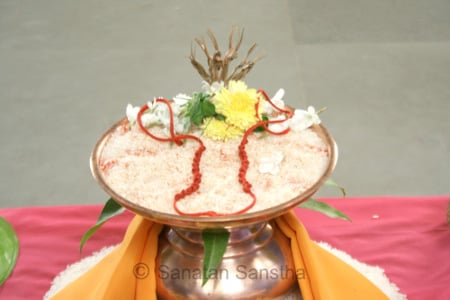
Anant vrat
3. Kama (Fulfilling desires) : Shanipradosh (religious observance to overcome defects due to the planet Saturn in the first part of the night on a specific tithi), parayans (repeated readings) of Shri Gurucharitra,Harivounsh-shravan (listening to the reading of Harivounsh), Sola somvar (or sixteen Mondays – to beget a son).
4. Moksh : The vrat of sixteen Mondays.
B. Nishkam vrat
‘Without expectation’ refers only to ‘no expectations with regard to worldly life’. Even in worship without expectation, the desire to attain God or Moksh does exist.
2. Regular and Incidental
A. Regular vrats
These are the duties to be performed according to the varna (Class) system. For instance, celibacy, puja (Ritualistic worship), sandhya (Ritualistic worship of the Sun Deity to be performed daily at sunrise, noon and sunset by all those whose thread ceremony is performed. It is accompanied by chanting of the Gayatri mantra and meditation) etc. should be performed everyday.
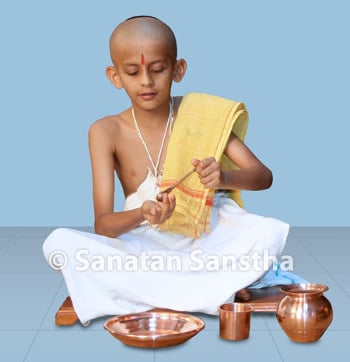
Sandhya
B. Incidental vrats
These vrats are performed only on specific tithis, for example, Vatpournima, Mangalagour, Haritalika, Ganesh Chaturthi, Rushipanchami, Kojagari etc.
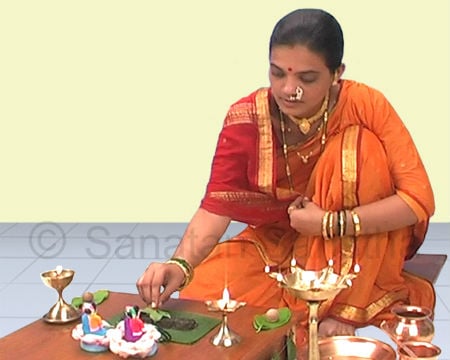
Haritalika
3. According to the need
A. Most essential (penance) : These are vrats performed as penance. For instance Kruchha, Ardhakruchha, Chandrayan etc.
B. Essential (duty) : These are activities to be carried out and the code of conduct to be followed according to the varna system, for example celibacy, sandhya, honouring of a guest etc.
C. Voluntary : Vrats undertaken with a specific motive, for example the sakam vrats.
4. According to the sense organ
A. Vrats performed at a physical level : Observance of a fast, eating only one meal, practicing non-violence etc.
B. Vrats performed at a verbal level : Chanting the God’s Name, speaking the truth, speaking politely etc.
C. Vrats performed at a mental level : Observance of celibacy, practicing non-violence even mentally, control over anger etc.
5. According to the time
Most vrats fall in the period between Pratipada and Saptami (Seventh day in a Hindu lunar fortnight) or Ashtami (Eighth day in a Hindu lunar fortnight) because from then on waxing of the Moon begins and the opportunity for fulfillment of the vrat too increases.
Depending on when the vrat is performed, the period is divided into the half-year, era, month, fortnight, date as per Hindu lunar almanac, day, the ruling constellation, position of planets (yog), the half-day etc.
A. Mas-vrat
The vrats performed in the Hindu lunar months of Vaishakh, Bhadrapad, Kartik and Magh are known as ‘Mas-vrat’, that is monthly Vrats.
B. Paksh-vrat
The vrats performed in the bright fortnight or dark fortnight are known as ‘Paksh-vrat’, that is fortnightly vrat.
C. Tithi-vrat
The vrats performed on the fourth, eleventh, Bhanusaptami, thirteenth day and on the new moon day as per Hindu lunar almanac are known as ‘Tithi-vrat’, that is vrat for particular tithis.
D. Var-vrat
The vrats performed on Monday, Tuesday, Friday and Saturday are known as ‘Var-vrat’, that is vrat for particular days.
E. Nakshatra-vrat
The vrats observed when the constellations of Shravan, Anuradha and Rohini are ruling are known as ‘Nakshatravrat’, that is vrat during constellations.
F. Other vrats
The other vrats include Yog-vrats like Yatipat, Karan-vrat like Bhadra etc.
6. According to the Deity
In accordance with the Deity of worship, there are Ganesh-vrat, Surya-vrat, Shiva-vrat, Vishnu-vrat and Devi-vrat.
7. Individual and collective
Most vrats are to be practiced individually. However, Shriram Navami in the month of Chaitra, Shrikrushnashtami in the month of Shravan and Ganesh Chaturthi in the month of Bhadrapad etc. are vrats undertaken collectively.
8. According to the differences, that is, a man and a woman
A majority of vrats can be celebrated by both men and women. However, some vrats like Haritalika and Vatsavitri are meant only for women.
9. According to the varna
Some specific vrats are to be practised only by the royalty, Kshatriyas (warriors) or Vaishyas (businessmen).

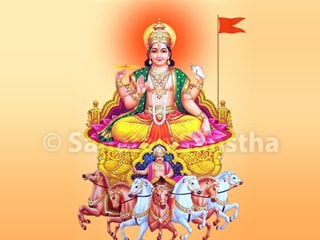 Ratha Saptami 2025
Ratha Saptami 2025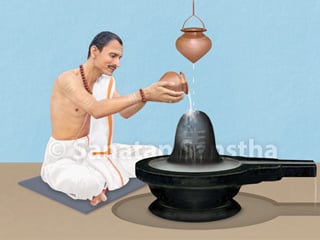 Mahashivratri 2025
Mahashivratri 2025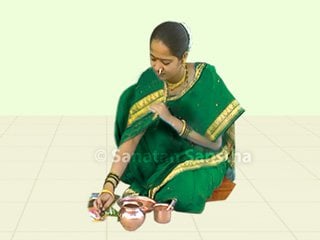 Importance of Adhik maas (Purushottam maas)
Importance of Adhik maas (Purushottam maas)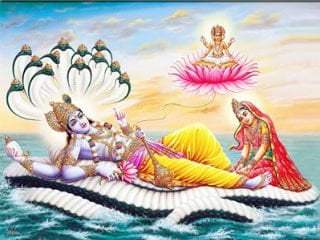 Vaikunth chaturdashi is an invaluable opportunity granted to us to worship Deity Shri Vishnu
Vaikunth chaturdashi is an invaluable opportunity granted to us to worship Deity Shri Vishnu How to celebrate Navaratri in adverse times caused by coronavirus pandemic ?
How to celebrate Navaratri in adverse times caused by coronavirus pandemic ?